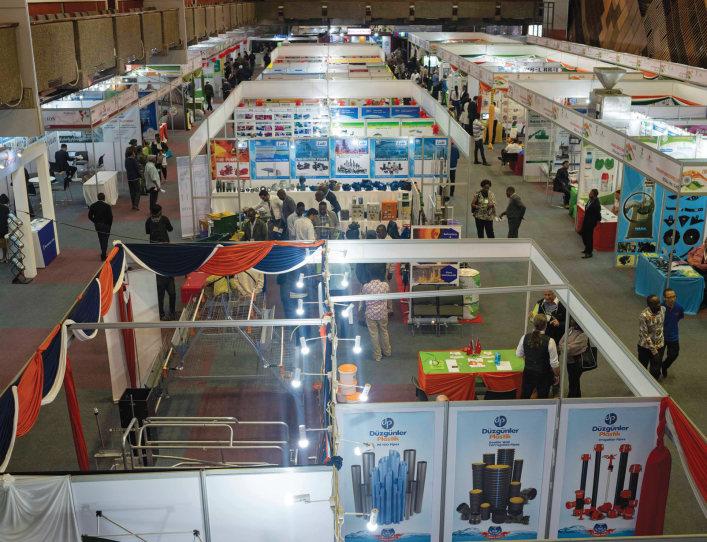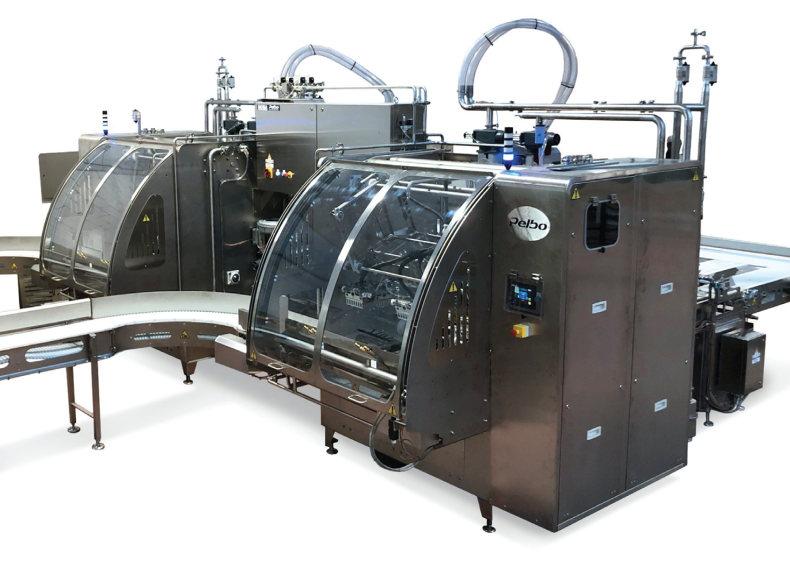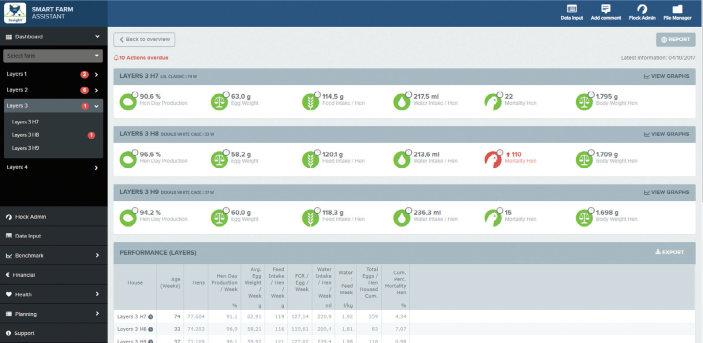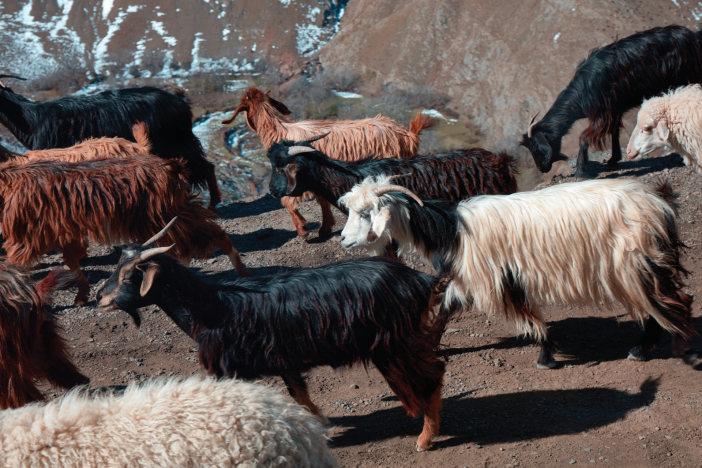
19 minute read
Crops
An emerging, urbanised middle class and rising exports are factors driving coffee demand in East Africa. Mwangi Mumero finds out more.
Boosting demand for coffee in East Africa

Experts note that the increase in coffee prices at the New York Coffee Exchange has been instrumental in boosting earnings for Kenyan farmers.
IN DOWNTOWN DAR es Salaam, coffee enthusiasts meet at Atom Coffee Hub or Grano Coffee for espressobased drinks.
While coffee consumption remains low in East Africa compared to North Africa, the sector continues to grow, despite numerous challenges.
Kenyan coffee industry
Coffee earnings among Kenyan farmers continue to soar this year, as compared to last year, as global demand rose even with the troubling effects of the Covid-19 pandemic.
Market reports from the Nairobi Coffee Exchange (NCE) showed that the crop earned US$47.3mn in January 2021 – a 94% rise from US$24mn in January 2020.
The NCE chief executive officer Daniel Mbithi observed that the improved earnings is a result of high demand for the Kenyan coffee and higher volumes at auction.
“There has been a very high demand now for Kenyan coffee especially for the washed premium ones. This has seen a surge by an amazing 64.49% from an average of US$177.46 in January 2020 to US$291.91 per 50 kilogramme,” said Mbithi.
On an average, prices of 50kg bag went up to US$132 at the end of January 2021 from US$111, in early 2020.
Experts note that the increase in coffee prices at the New York Coffee Exchange has been instrumental in boosting earnings for Kenyan farmers.
Kenyan coffee has a bright acidity and a wonderful sweetness with a dry winy aftertaste. A really good Kenya coffee will have a black-current flavour and aroma, according to the Kenya’s Coffee Directorate, the industry regulator.
Kenya grows mainly the Arabica coffee, farmed by nearly 700,000 smallholder farmers across 32 counties. It is marketed by, approximately 500 primary cooperatives which receive, process and then deliver to any of the 17 coffee mills.
Among the leading millers are Thika Miller Limited, New Kenya Planters Co-operatives Union (KPCU), Kofinaf Company Limited, Sasini PLC and Kahawa Bora Millers.
Among the coffee dealers are Dorman Coffee, Diamond Coffee, Africa Coffee roaster EPZ and Eagle Brown Coffee Limited.
Such has been the rosy story of coffee earnings among East African farmers even as coffee production continues to declines due to a myriad of challenges.
Government projections indicate a drop in production from 44,000 tonnes in 2019 to the projected 40,000 tonnes projected for 2020.
“Our farmers are harvesting less coffee per tree while others are converting their land for real estate purposes and this has negatively impacted our coffee production”, said Dr Hamadi Boga, principal secretary in Kenya’s Ministry of Agriculture.
According to Dr Boga, on average, a farmer is able to harvest 2kg per coffee bushel while major coffee producing nations can achieve up to 30kg per bush.
Coffee production has been falling from more than two million bags in 2016 to less than one million two years ago.
“While demand for Kenyan coffee in the world remains steady, with the United States being one of the top export destinations, the future of Kenya’s coffee production remains uncertain,” notes a report prepared by Kennedy Gitonga for the USDA Foreign Agricultural Service.
Low prices, and persistent shift of coffee producers to less risky enterprises are the leading factors in the possible fall in marketed coffee volumes in recent years.
Coffee production and climate change
“The coffee bush is bearing berries at different stages of maturity becoming hard
to manage. Diseases and pests have also become more persistent as temperatures rise – increasing the cost of production”, observed Joseph Kuhia, a coffee farmer in Chinga area of Nyeri County.
Kuhia is among a group of new farmers attracted by high coffee prices. This threeacre farm is located in the fertile and rainy countryside on the shoulders of the Aberdare Ranges in Central Kenya.
Coffee does well in rainy weathers that are also rich in fertile, acidic loamy soils. Central Kenya counties of Kiambu, Nyeri, Murang’a and Kirinyaga remain the core Arabica coffee producing regions.
The region straddles Mt Kenya and Aberdare Ranges, which has predominantly acidic loamy soils destined from volcanic activity
The Ruiru-based Coffee Research Foundation (CRF) has developed two coffee varieties - Ruiru 11 and Batian - to cater for the emerging challenges of climate change. These varieties are resistant to coffee leaf rust and coffee berry diseases.
Tanzania coffee industry
Meanwhile, statistics from the Tanzania Coffee Board (TCB) show that coffee exports for the 2019/2020 was estimated at 50,000 tonnes, down from 68,000 tonnes in the 2018/2019 period.
Dependency on old coffee trees and increased occurrence of pests and diseases are some of the major drawbacks in the sector, according to government officials.
The government has been urging the Tanzania Coffee Research Institute (TACRI) to ensure new coffee varieties are well distributed to farmers. Tanzania has an estimated 250,000ha of land under coffee production – and an estimated 530,000 coffee farmers in 50 districts across eight major production zones.
The Tanzania Coffee Research Institute (TaCRI) has, in recent years developed 19 varieties that are resistant to coffee leaf rust and coffee berry disease.
In Tanzania and Uganda, some firms, involved in milling and marketing of coffee are Africa Coffee Roasters, Vava Specialty Coffee, Tembo Coffee Company, Atlas Coffee Importers, Bugisu Co-operative Union, Busiro Coffee and Produce Ltd.
Just like other businesses in the subsector, specialty coffee dealers are a worried lot with declining volume.
“Every year is getting hotter,” observed Dr Joseph Kimemia, the vice-chair Africa Fine Coffee Association.
Dealers are equally concerned.
“The diminishing volumes of coffee is very concerning for the speciality coffee world,” said Mathew Harrison, a buyer at speciality coffee sourcing company Trabocca.
The Netherlands registered coffee importer sources its coffee from farmers in Nyeri County, on the south-west slopes of Mt Kenya, working directly with cooperatives societies.
Ugandan coffee
Coffee production in Uganda has been rising with exports for the 2019/2020 season, amounting to 4.74 million 60kg bags worth US$459.52mn. This compares favourably with the 4.24 million bags, worth US$435mn in the 2018/2019 season.
Uganda grows mainly Robusta coffee although Arabica coffee is also farmed in some regions.
Most areas produce Robusta variety with 66.8% of its production being exported to the European Union nations of Italy, Germany, Spain and regionally in Sudan.
Market reports indicate that exports of the Robusta variety in February 2020 increased by 48.61% in terms of quantity and 43.05% in terms of value.
In recent years, Uganda has been looking to expand its coffee market to Australia, a country that boasts one of the biggest coffee markets in the world.
Among the specialty coffee importers in Uganda is Mercanta which deals with high quality coffee.
The company has invested in sustainably grown and priced specialty-grade Arabica coffee.
Working with local partners, the firm sources its coffee from 18,000 smallholder farmers, many eager to receive higher prices for their high-quality coffee.
According to the Specialty Coffee Association (SCA), participants in the value chain from farmers, green coffee buyers, roasters to baristas must ensure high quality standards.
Farmers selling coffee berries must ensure they are free of defects and picked at their peak of ripeness. Such farmers are then connected to buyers interested in quality resulting in high profits for farmers, their families and communities, according to the SCA.

Coffee in Rwanda
Meanwhile in neighbouring Rwanda, coffee is produced by more than 400,000 smallscale farmers and their families. Almost all coffee grown in the country is Arabica with 95% being the Bourbon varieties.
The specialty coffee sub-sector still remains largely underdeveloped.
According to the Rwanda Development Board, annual coffee production ranges from 20,000 to 22,000 metric tonnes.
The major markets for Rwandan coffee are the United States, Switzerland, UK, Belgium and Singapore.
Three years ago, Rwandan coffee started trading on the Alibaba e-commerce platform.
Among the coffee exporters in the country include Dallas Investment Ltd, Gatare Coffee, Green Land Coffee Ltd, Coffee & Tea (COFERICA) Ltd and 1000 Hill Products Rwanda Ltd.
Across Africa, Ethiopia remains the biggest coffee producer followed by Uganda, Ivory Coast, Tanzania, Kenya, Madagascar and Cameroon.
In consumption, Ethiopia-considered the cradleland of coffee, still leads the pack, followed by Algeria, Egypt, Sudan, Morocco, South Africa, Tunisia and finally Madagascar. h
Image Credit: Mwangi Mumero
Nyambene Coffee Mills display assorted coffee products at a Coffee Research Foundation Fair, in Ruiru, just outside Nairobi.
A new variety of banana is gaining popularity and promising to be more resilient to disease. Fyna Ashwath discovers more on what makes it different.
Reinventing the future of the banana
ASTAPLE PART OF the diet, the banana is a lynchpin of the economy in places such as Africa and South America. In fact, Kenya grows around 1.5 million tonnes of bananas annually, and it is a major local food source. However, a deadly fungus is sweeping the world, and Kenyan farmers are fighting to find a solution.
BBC World News series Follow The Food, explores the alternative banana variety, FHIA-17.
The series informs us about how the Cavendish variety, which makes up almost half of all the bananas grown on the planet, is susceptible to Panama disease, and is at imminent risk of extinction.
A new variety
At Kalro Kakamega Research Institute in Kenya, alternative banana varieties are being studied, in the hope that they can be as popular as the Cavendish, but much more resilient to disease.
Isaac Ogutu, farms systems coordinator for Send a Cow, a Kenyan NGO that helps smallholder farmers, says, “In general, bananas grow well in a wide range of soils and climatic conditions across Kenya, provided that the soil is fertile and there is some rain, or moisture in the soil.
Bananas flower mostly during the wet season and mature fully during dry season. The succulent underground stem stores water and nutrients that the plant will depend on during dry months. The leaves and sheath also store food and water, as well as performing photosynthesis.”

How the FHIA-17 bananas are different
The FHIA 17 is tall, with a strong stem, and can be cooked or ripened. When ripe it has a ‘brilliant yellow’ colour, and is currently taking the largest share of the ripe bananas market in Kenya.
FHIA 17 has proved fairly resistant to pests, and to the lethal effects of the new strains of the Panama disease.
Yields per hectare of land are higher with the FHIA 17, and it has won the hearts of many farmers in rural Kenya.
“This variety can produce around 130 to 270 fruits per bunch depending on the management practice. I have not had the opportunity to count the number of fruits for the Cavendish due to the risk of Panama disease, but I can easily estimate it to be half the yield of the FHIA,” says Ogutu.
Farmers in Kenya have been quick to adopt the new FHIA variety because of its tolerance to diseases, faster maturity (around 12 months from the time of transplanting), and higher yields. Due to its strong stem, it is not easily blown down by wind. It also has a longer shelf life when ripe, compared with other varieties.
The majority of farmers prefer to sell it when ripe, as it fetches more income, this makes it one of the top food and income security crops in Kenya.
Bananas are a major food source in Kenya.
Overcoming obstacles
The biggest challenge farmers have been facing in growing the FHIA 17 is the availability of seedlings from nurseries and research institutions. The nurseries are usually a long distance away from the farmers. And high demand has made the price of seedlings rise as high as KSh 250 (US$2.50) each.
To help farmers cope with these challenges, Send a Cow Kenya, is currently training farmers to macro-propagate bananas using maiden suckers and corms in simple propagators made with locally available materials: poles, sawdust or sand, polythene, and nails or string.
“Using this propagation method, the apical dominance is interfered with, which makes the maiden sucker produce many as 12-20 plantlets, “ adds Ogutu. h
Omex Agrifluids has a range of products to help tea growers provide complete nutrition.
Foliar feeding the Omex way – it’s time for tea!
SUB-SAHARAN AFRICA HAS become one of the world’s major teagrowing hubs with a number of countries producing high tonnages of tea. Kenya ranks number three in the world with an annual crop approaching 500,000 tonnes per annum, while Malawi, Burundi, Uganda, Tanzania, Mozambique and Rwanda collectively weigh in another 250,000 tonnes.
As an evergreen bush crop with young shoots and leaves routinely picked, tea requires full and fast nutrition by foliar feeding says Omex Agrifluids, a world leader in the design, development and delivery of soluble nutrient products. Assam in North-East India, the world’s largest tea growing region by production is where a full range of Omex products are used to maintain plant vigour and vitality of the world famous Assam black tea leaf infusion. Tea growers on estates across Assam use the following combination of Omex products.
Omex Bio 20 – A formulation of macronutrients, magnesium + iron and chelated micronutrients all ‘wrapped up’ with a natural biostimulant sourced from seaweed. Omex Bio 20 is applied as a foliar spray. Omex Bio 20 is used first in the tea nursery to promote root biomass for maximum uptake and utilisation of water and nutrients. Follow up applications to young tea bushes help to alleviate physiological stress caused by abiotic and biotic factors including high temperature, soil moisture deficit and pest and disease attack. Mature tea bushes benefit from Omex Bio 20 through enhanced plant health and vigour translating into higher yields of better quality leaf. As a foliarapplied spray Omex Bio 20 is effective during the wet season when soils are waterlogged and root absorption is inhibited.
Omex Kingfol Zn – A high analysis liquid suspension containing 70% zinc (w/v) and used for rapid correction of zinc deficiency which is common in tea growing regions, including Assam, because zinc becomes locked up in the soil. Recommendation is 0.25 to 0.5 L/ha as a foliar spray depending on severity of zinc deficiency. Regular use reduces the incidence of ‘banjhi’ buds, a pair of leaves enclosing a dormant (inactive) bud or no bud at all. Omex Kingfol Zn outperforms standard foliar spray applications of zinc sulphate (Zn SO4) especially during attacks of red spider mite (Oligonychus coffeae).
Omex Foliar Boron – A high analysis solution of boron (15% w/v) used to boost recovery from attacks by tea mosquito bug (Helopeltis theivora) and/or to correct boron deficiency. Recommended rate is 0.5 to 0.6 L/ha as a foliar spray applied immediately after attack by tea mosquito bug and at the first sign of deficiency symptoms. Omex Foliar Boron is the ideal ‘rehabilitation’ spray for tea.
Omex K41 – This is a water soluble emulsion of macronutrients and sulphur containing an ultra-high (40% w/v) concentration of potassium. Potassium the socalled ‘gatekeeper’ nutrient is crucial for maintaining optimal plant water relations. Foliar application of Omex K41 improves tea leaf turgidity to produce heavier harvests of picked leaves and shoots. Omex K41 is especially useful when tea is grown on sandy substrates where soil water deficits are most pronounced. Omex Seastar F –Seastar F is a natural seaweed-derived growth stimulation product containing a range of physiologically active compounds including amino acids and plant hormones. Foliar applications assist in breaking bud dormancy especially during dry periods, thus boosting growth of new shoots for heavier harvests of leaves.
Omex Kingfol Mg – This is another product from the Omex Kingfol range and containing 22% magnesium (w/v), which is the metallic element at the core of the chlorophyll molecule. Under plant stress conditions tea leaves become hard and fibrous and unsuitable for picking. Application of Kingfol Mg as a foliar spray helps to soften the leaves while heightening leaf colour by enhancing chlorophyll content for improved photosynthesis and yield.
Omex Kingfol S – Kingfol S with 72% sulphur (w/v) improves the green colour and shine of tea leaves to give measurable increases in yield. The sulphur in Kingfol S also hones quality of the black tea infusion because sulphur is a key constituent of the chemicals responsible for colour, taste and aroma.
Omex 3X Emulsion – A fully watersoluble fluid fertiliser containing macronutrients and chelated micronutrients with magnesium and iron. Foliar feeding with Omex 3X Emulsion improves chlorophyll content of leaves for bigger and faster breaking leaf buds and enhanced leaf colour. The improved plant vigour alleviates soil-associated stress whether from waterlogging or drought. h

Kenya ranks number three in the world with an annual crop approaching 500,000 tonnes per annum.
Israel’s agricultural technology to help food security in the UAE and Africa
The innovative methods developed for agricultural technology in Israel can be useful for the UAE and other Middle Eastern countries.
IMPROVATE, A COMPANY that facilitates technology and innovation for countries across the world, by bringing together leaders and decision makers on a common platform, recently organised the IMPROVATE Israel-UAE Agriculture & Water In Arid Areas conference in Tel Aviv.
IMPROVATE discussed the challenges faced by the UAE and African nations in ensuring food security, when faced with adverse climatic conditions, and the opportunities that Israeli companies may find therein.
The conference was attended by senior government representatives from Israel and Africa, along with investors from the UAE and Israeli agricultural technology companies. The companies which attended the conference included Netafim, SupPlant, GES, NRGene, AlgaHealth, WFI Group and the Ramat Negev Desert Agro Research Centre.
While Netafim provides innovative solutions to farmers, by helping them maximise their yields and saving on water and other resources; SupPlant, an Ag-Tech Israeli company, uses agronomic guidance technology to assist farmers in making the best use of the resources available.
Ramat Negev Desert Agro Research Centre, an agricultural research and development centre, specialises in agriculture under desert conditions, for more than 60 years now.
IMPROVATE founder and chair Irina Nevzlin said the introduction of the Abraham Accords and fostering strong relationships between the UAE and Israel, had brought about an opportunity for exchange of knowledge and expertise. “As Israel’s landscape is very similar to that of the UAE, including the desert areas, the innovative methods developed for agricultural technology in Israel can be a valuable asset and focal point for partnering with the UAE and other Middle East countries,” she added.
Alon Schuster, minister of Agriculture and Rural Development, said Israel’s desert climate and limited natural resources had led it to develop some advanced agricultural technologies that were at the forefront of global development. “The Israeli agricultural sector offers agricultural technologies to increase efficiency and yields, while generating maximum returns in all fields of agriculture, in challenging climate and soil conditions. The fruitful collaboration will enable us to share our experiences with our partners on a desert climate and a reality of increasing desertification, and to learn together and share our knowledge and experience to create more efficient and sustainable agriculture that will ensure global food security.”
Ronit Hasin-Hochman, IMPROVATE CEO, stated, “Israeli water management and agricultural technologies can provide outstanding solutions for countries around the world. We are very pleased that recent peace agreements enable us to facilitate collaborations across countries and continents.”
Job Masima, ambassador of Tanzania to Israel, called on Israeli companies to come to Africa, adding that the continent has a rapidly growing population, is more stable politically now, and that its economy is on the rise, with five out of 10 of the world’s fastestgrowing economies located in Africa. “Once you come to Africa, you are coming to a vast land that is like all of China, all of the US and all of Europe, so this is where you should be looking. Around 30% of the world’s arable land is in Africa. With this arable land, we are capable of feeding nine billion people. Africa is the future global powerhouse, come to Africa,” he added.
Joseph Antoine Kasonga Mukuta, minister of Agriculture from The Democratic Republic of Congo; Dr Deo-Guide Rurema, minister of Agriculture, Livestock and Environment of Burundi; Hadija Jabiri, founder and managing director of GBRI business solutions, EATFRESH from Tanzania; Tom Sillayo, general manager of Faida Market Link Company, from Tanzania and Lazare Ossende-Essanga, director of Partnerships Promotion and Rural Entrepreneurship at the Gabon National Agricultural Development Agency, also attended the conference.
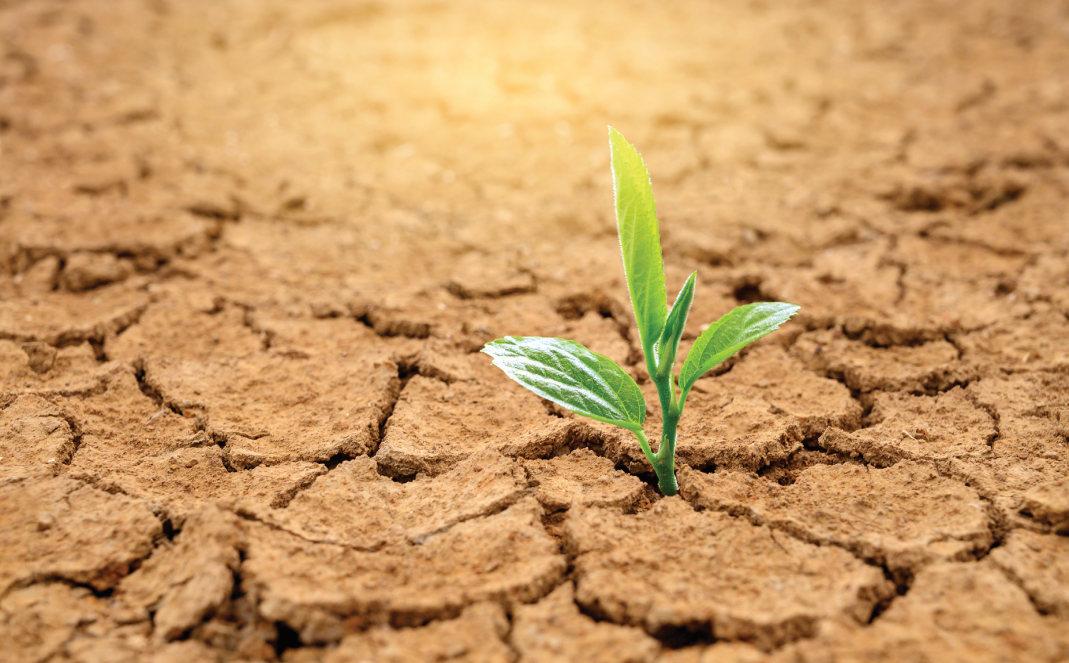
Provivi to help Kenyan farmers in crop protection
EMERGING CROP PROTECTION company Provivi has announced a US$10mn investment by the Bill & Melinda Gates Foundation
This amount adds to Provivi’s recently announced US$45.5mn C2 fundraising round.
This investment in Provivi aims to further advance the foundation’s objective of developing new crop innovations designed to meet the needs of smallholder farmers.
The funding will support the production and distribution of crop protectants to address insect pests that have a disproportionate impact on small-scale producers within developing countries. The programme will focus on several individual projects to develop and supply Provivi’s pheromone-based Mating Disruption products against Rice Stem Borer and Maize Fall Armyworm to small-scale farmers in Kenya, Bangladesh, and India. Pheromones are substances that serve as highly selective attractants for insects, allowing the control of deleterious pests while preserving beneficial insects. They are naturally produced substances that have been commercially used to disrupt the mating of insect pests.
Pedro Coelho, co-founder, and CEO of Provivi, said, “A core mission of Provivi is to ensure the availability of our products to those farmers in developing countries, who stand to benefit the most from being able to use our safe and reliable technology. With this collaboration, we will leverage the technology recently registered and commercialised in Mexico, Brazil, and Kenya. Our products will help improve the livelihoods of farmers, who will now get access to this technology, by helping them prevent damaging insect attacks and thereby improve their crops and securing the supply of their staple food without putting their health or the environment at risk.”
Ganesh Kishore, chairman of the board at Provivi, stated, “The joint projects will help accelerate a core objective of Provivi, namely improving lives of small-scale producers in developing countries by selectively addressing devastating pest problems offering safe and affordable protection of their crops.”
“We are especially encouraged to continue to fuel Provivi’s growth and boost our ability to work in developing countries. Agriculture is resilient, and farmers play an indispensable role in the global economy. We are excited to take the Provivi brand to new countries and to bring the benefits of pheromones to the grain crop farmers who feed the world,” Coelho concluded.
Adobe Stock Image Credit:
The funding will support the production and distribution of crop protectants to address insect pests.



